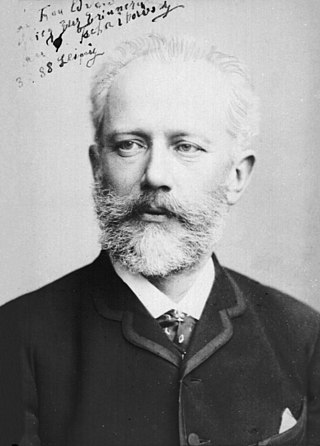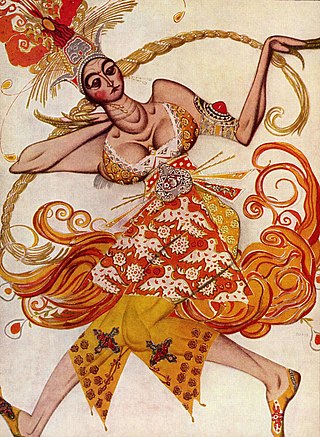Sources
- Gottlieb, Jack: Working With Bernstein, p. 194-6.
| | This article about a classical composition is a stub. You can help Wikipedia by expanding it. |
The Dance Suite for Brass Quintet (1989) is the last work completed by the American conductor and composer Leonard Bernstein. It consists of five short movements, each dedicated to a friend.
2 trumpets, 1 French horn, 1 trombone, 1 tuba.
The suite was the last composition that Bernstein completed. It was originally intended to be accompanied by dance, but the choreographer[ who? ] abandoned the idea.
The suite was premiered on January 14, 1990 at the Metropolitan Opera House, New York City, by the Empire Brass Quintet and American Ballet Theatre. The first movement was doubled by the ballet's orchestra in the pit.

The Nutcracker, Op. 71, is an 1892 two-act classical ballet by Pyotr Ilyich Tchaikovsky, set on Christmas Eve at the foot of a Christmas tree in a child's imagination. The plot is an adaptation of E. T. A. Hoffmann's 1816 short story The Nutcracker and the Mouse King. The ballet's first choreographer was Marius Petipa, with whom Tchaikovsky had worked three years earlier on The Sleeping Beauty, assisted by Lev Ivanov. Although the complete and staged The Nutcracker ballet was not as successful as had been the 20-minute Nutcracker Suite that Tchaikovsky had premiered nine months earlier, The Nutcracker soon became popular.

The Firebird is a ballet and orchestral concert work by the Russian composer Igor Stravinsky. It was written for the 1910 Paris season of Sergei Diaghilev's Ballets Russes company; the original choreography was by Michel Fokine, who collaborated with Alexandre Benois and others on a scenario based on the Russian fairy tales of the Firebird and the blessing and curse it possesses for its owner. It was first performed at the Opéra de Paris on 25 June 1910 and was an immediate success, catapulting Stravinsky to international fame and leading to future Diaghilev–Stravinsky collaborations including Petrushka (1911) and The Rite of Spring (1913).

Hilding Constantin Rosenberg was a Swedish composer and conductor. He is commonly regarded as the first Swedish modernist composer, and one of the most influential figures in 20th-century classical music in Sweden.

Sven Einar Englund was a Finnish composer.
Joseph Horovitz was an Austrian-born British composer and conductor best known for his 1970 pop cantata Captain Noah and his Floating Zoo, which achieved widespread popularity in schools. Horovitz also composed music for television, including the theme music for the Thames Television series Rumpole of the Bailey, and was a prolific composer of ballet, orchestral, brass band, wind band and chamber music. He considered his fifth string quartet (1969) to be his best work.

Wallingford Constantine Riegger was an American modernist composer and pianist, best known for his orchestral and modern dance music. He was born in Albany, Georgia, but spent most of his career in New York City, helping elevate the status of other American composers such as Charles Ives and Henry Cowell. Riegger is noted for being one of the first American composers to use a form of serialism and the twelve-tone technique.
Arnold Atkinson Cooke was a British composer, a pupil of Paul Hindemith. He wrote a considerable amount of chamber music, including five string quartets and many instrumental sonatas, much of which is only now becoming accessible through modern recordings. Cooke also composed two operas, six symphonies and several concertos.
Walter Sinclair Hartley was an American composer of contemporary classical music.
Dance suite may refer to the form of the musical suite known as the suite de danses.

The Miraculous Mandarin Op. 19, Sz. 73, is a one act pantomime ballet composed by Béla Bartók between 1918 and 1924, and based on the 1916 story by Melchior Lengyel. Premiered on 27 November 1926 conducted by Eugen Szenkar at the Cologne Opera, Germany, it caused a scandal and was subsequently banned on moral grounds. Although more successful at its Prague premiere, it was generally performed during the rest of Bartók's life in the form of a concert suite, which preserves about two-thirds of the original pantomime's music.
Zbyněk Vostřák was a prominent Czech composer of New Music.

Geoffrey Grey is a British classical composer.
Leon Stein was an American composer and music analyst.
West Side Story Suite is a ballet suite choreographed by Jerome Robbins. Robbins conceived, directed and choreographed the 1957 musical West Side Story, then co-directed its 1961 film adaptation, before including parts of the choreography in the anthology Jerome Robbins' Broadway. Robbins developed the latter to the ballet West Side Story Suite for the New York City Ballet, which premiered on May 18, 1995, at the New York State Theater.

Arkady Luxemburg is a Moldovan-American composer.
Along with a concerted effort to commission new works for brass quintet since 1967 the bulk of any brass quintet's repertoire consists of arrangements of pre-existing music. Victor Ewald's four brass quintets are the first serious attempts at establishing a repertoire for the ensemble, though they do not stand up to typical string quartet repertoire of the same and preceding eras. The Chicago and New York Brass Quintets made sustained efforts to commission new works, and much of the original repertoire for brass quintet from the mid-20th century derives from their groundbreaking work. In the 1960s the mantle of creating a repertoire for brass quintet was taken up by the American Brass Quintet and the New York Brass Quintet, with both groups essentially establishing the brass quintet as a part of the chamber music field. Notably, only two brass quintets have ever been awarded the Walter W. Naumburg Chamber Music Award, considered by many to be the highest achievement in brass chamber music: The Empire Brass Quintet in 1976 and The Saturday Brass Quintet in 1990. But it was Canadian Brass that developed the pragmatic approach to repertoire allowed the ensemble to reach a wider audience. They developed a two prong approach to performance, developing a masterpiece approach to repertoire that popularized the brass quintet as an ensemble into what was essentially a "pops" ensemble. Meanwhile, the ensemble has been pursuing an aggressive 45-year commissioning schedule. Though this ensemble is seldom recognized for its achievement in the contemporary sphere, they have created well over 100 newly composed works for brass quintet, though few of the Canadian Brass commissions of original compositions have taken hold in the repertoire of other brass quintets.